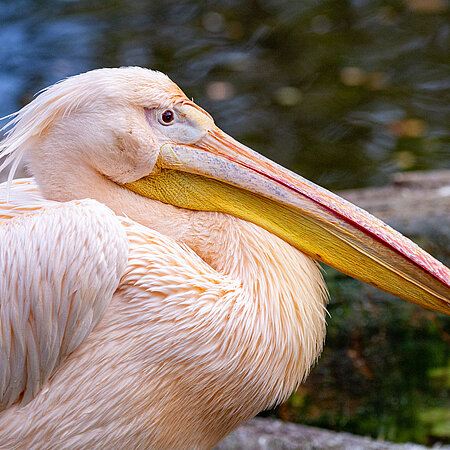Great White Pelican
Pelecanus onocrotalus

- Family
- Pelicans (Pelecanidae)
- Weight
- 9 – 14 kg
- Habitat
- Freshwater lakes, river deltas, wetlands, salt lakes and coastal areas
Scoop net for fishing
Pelicans, like cormorants and gannets, belong to an order of birds known as pelecaniformes – species with all four toes webbed. Almost all these birds have a throat sac attached to the lower beak. Pelicans have a conspicuously enlarged throat sac, which can expand to hold up to 13 litres of water and is primarily used as a scoop net to catch fish.
From ugly duckling to rosy pelican
Great white pelicans typically lay two to three eggs in a clutch, which hatch after an incubation period of 30 to 36 days. The chicks are born naked, but gain a greyish-brown plumage after a few days. The young fledge when they are 12 to 14 weeks old with drab feathers, which they eventually exchange for a splendid white and pink adult plumage
Great white pelicans hunt in a horseshoe formation. They flap their wings in unison to surround and force fi sh into shallow water where they are easily scooped up.
Distribution
